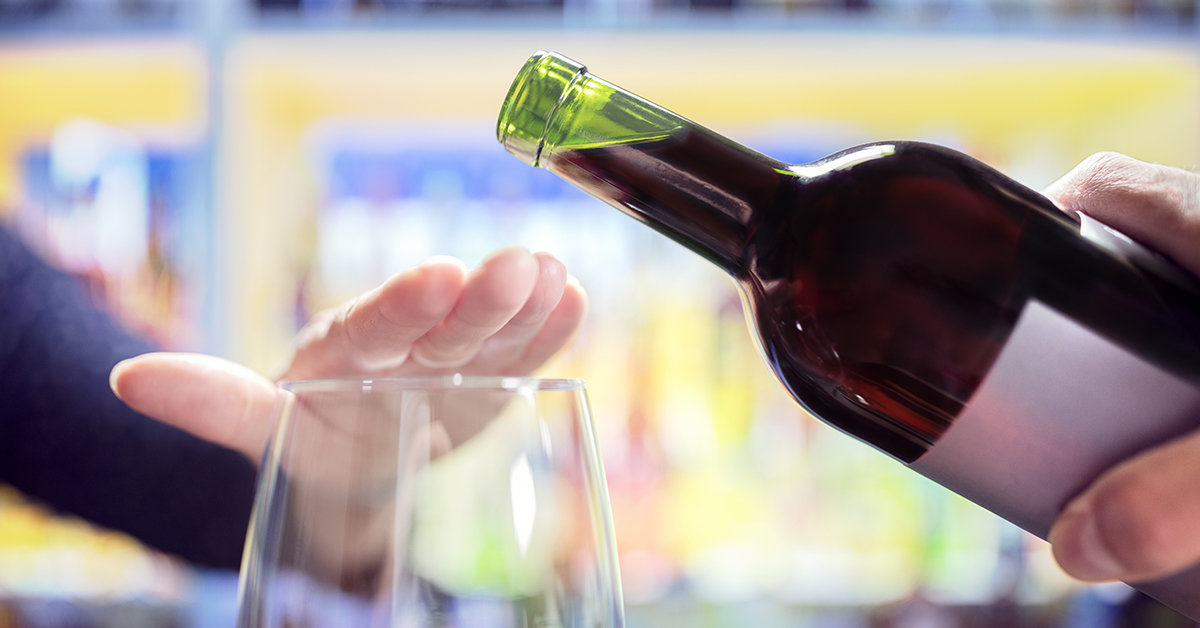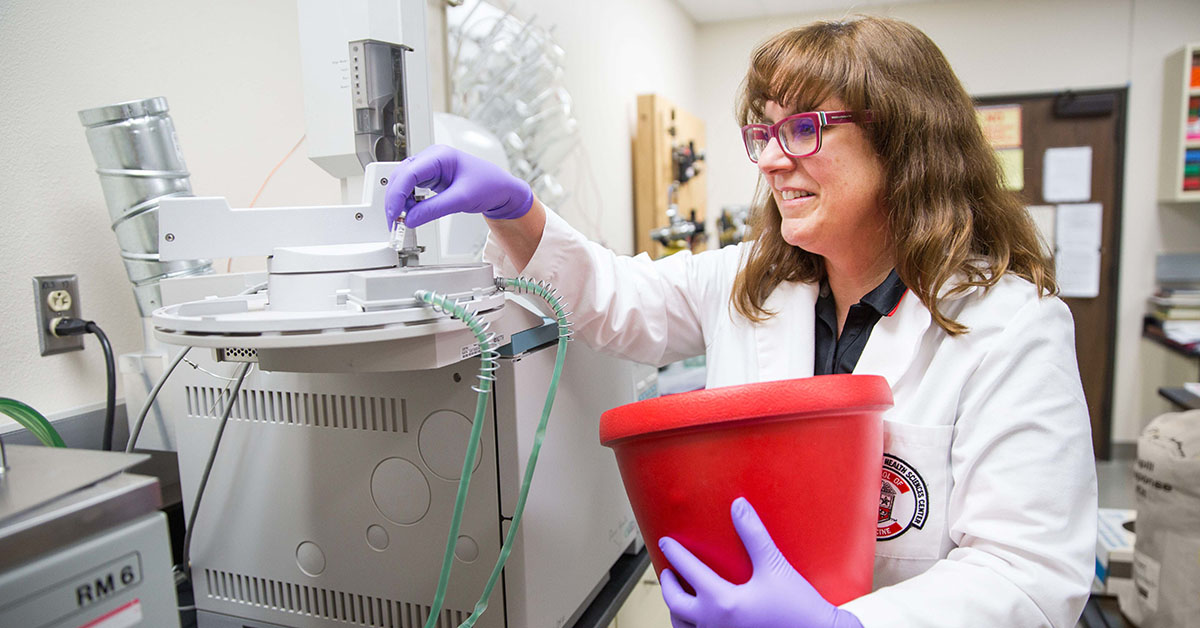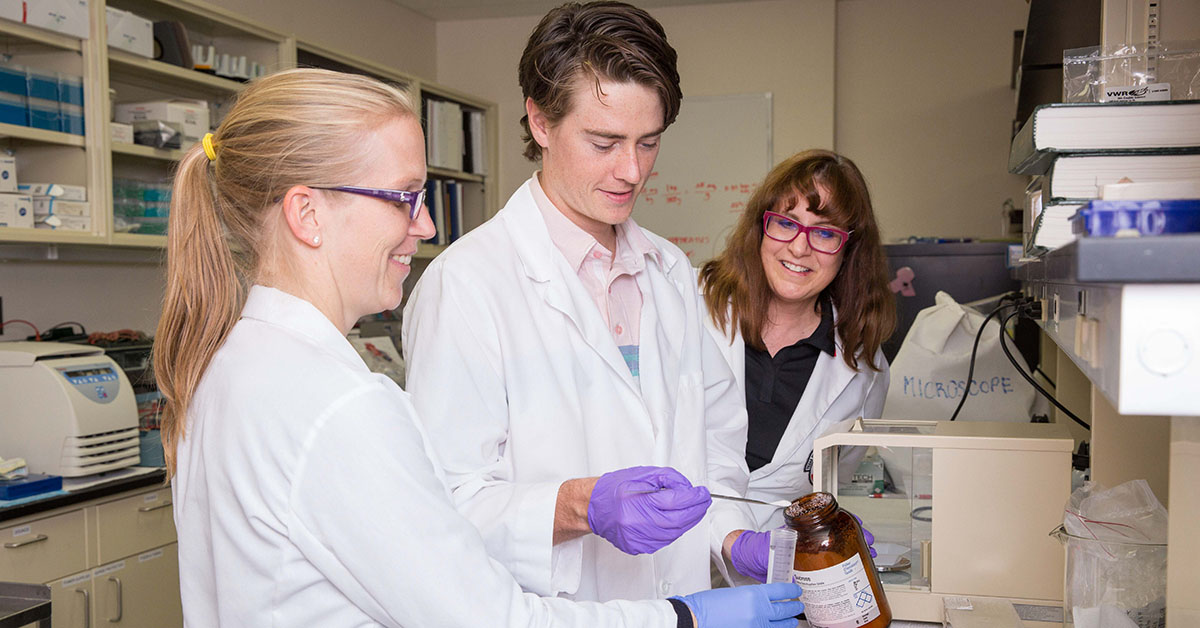Holidays Create Challenges for Those Living With Addiction
Alcohol Causes More Harm Than All Other Drugs Combined

The holidays are a time when we gather with family and friends to decorate the house, exchange gifts and enjoy special foods and drinks that help to define the season. However, for someone with an addiction such as alcohol use disorder (AUD), the holidays also may be a time of heightened temptation and opportunity.
Nearly 21 million Americans admit to at least one addiction, and according to the 2019 National Survey on Drug Use and Health, 14.5 million people 12 years of age and older battle alcohol use disorder. The U.S. Department of Health and Human Services estimates the annual economic impact of alcohol use disorder to be $250 billion. In fact, alcohol-related issues create more costs per capita than do all other drugs combined.
Susan Bergeson, Ph.D., a University Distinguished Professor for the Department of Cell Biology and Biochemistry at the Texas Tech University Health Sciences Center (TTUHSC) School of Medicine, said that while the addiction spotlight has turned toward the opioid epidemic, which has shown a five-fold increase in in recent years, more people continue to die annually from alcohol use disorder.
“Addiction has many forms; it could be sex addiction, eating disorders or substance use disorders, which includes everything from tobacco to opioids,” Bergeson said. “Smoking kills about 8 million people a year, mostly due to cancer and other respiratory issues. Many people think, ‘Well, alcohol is legal; it can't hurt anybody.’ It actually has higher morbidity and mortality than all drugs combined, except for smoking.”
Bergeson has studied the complex mechanisms that underlie alcohol use disorder for nearly 40 years. Recently she and others in the field discovered that neuroinflammation is a major pathway by which high alcohol consumption can lead to alcohol use disorder.

That discovery eventually led Bergeson and her collaborators to test minocycline, a tetracycline class antibiotic commonly used to treat acne that has documented anti-inflammatory properties. Today, she and TTUHSC colleague Ted Reid, Ph.D., a professor of ophthalmology and visual sciences, have designed a new medication based upon minocycline, but without antimicrobial confounds, that is currently on the path toward investigational new drug approval by the FDA.
Because alcohol use disorder is a brain syndrome, Bergeson said a person’s experience with alcohol or other drugs typically begins with a willingness to try it and continues with risky use and develops brain changes until they reach a point where they need it. On an individual level, that need can be very disruptive, affecting their relationships with family and friends, reducing their social interactions and often ruining their ability to successfully hold their job. In the case of drinking, Bergeson said the individual might literally need alcohol to stay alive, as alcohol withdrawal can be a medical emergency.
“Alcohol withdrawal is worse than withdrawal from other drugs,” Bergeson stressed. “Opioids are terrible to withdraw from but they generally don't kill you. People die from alcohol withdrawal, while overdose is a more common cause of death with opioid use disorder.”
The alcohol we drink is ethanol, and though it can be consumed and enjoyed responsibly, it is still a poison like some other alcohols (e.g., methanol, ethylene glycol and isopropanolyl). In high doses, ethanol is a depressant and a person can die from an acute overdose. Bergeson said this happens more commonly in college where kids who may be on their own for the first time try to keep up with peers who are more experienced drinkers.
“Acute alcohol poisoning causes respiratory depression and some individuals may actually aspirate vomit and die by asphyxiation, which is more common in college students,” Bergeson said. “If somebody is passed out [from drinking], it's really a sign they may need to be assessed for AUD.”

The risk for alcohol use disorder is about 50% genetics and 50% environment (e.g., poverty, stressful conditions such as abuse as a child, influence from others with high alcohol us and even dire poverty can increase risk). Interestingly, men have a higher probability of having alcohol use disorder, but women have more tissue damage at equivalent amounts of alcohol. Bergeson said because alcohol has been shown to be far more damaging in females than males, even at the same blood alcohol concentration, the NIH considers men who consume more than four drinks a day, or more than 14 drinks a week, to be at a high risk for developing alcohol use disorder. For women, high risk is defined as more than two drinks a day or more than seven per week.
Research has shown that men are more likely to drink to reduce their social anxiety, while women more often do so to reduce depression. Bergeson said both of those factors can play a role in how people respond to the holidays when parties and celebrations provide opportunities for one to drink when they don't normally, or drink more than usual.
One of the common misconceptions people have about alcohol use disorder is that a person can quit drinking “cold turkey” or through sheer will power. However, AUD is a lifelong disorder for which many struggle, even when they are intentional about staying sober. So while that may be possible with some other drugs or addictions, most find it much more difficult to walk away from alcohol.
“You will see individuals that have been drinking — maybe risky drinking — all of their life, and they just quit; it's not a problem for them,” Bergeson said. “But I think that's what makes it difficult for those who haven't had that really hard time quitting something; it's hard to empathize with somebody who continues to drink when it is to the point of being obviously harmful.”
Bergeson said people who have remained sober for many years still must deal with certain triggers set up by the chemistry networks in their brain that can cause them to relapse. For some, attending holiday events with alcohol present, being around the people with whom they used to drink or the smell of their favorite drink can be hard to resist.
“They might even see their drug of choice on television and it triggers their cravings,” Bergeson continued. “That can be really hard for alcohol use disorder. It is an illness, it is a brain disorder and it is categorized that way in the medical field. Remembering this during the holidays, and being supportive of those at risk is particularly kind”
Related Stories
Making Mental Health a Priority in the New Year
Sarah Mallard Wakefield, M.D., a psychiatrist with Texas Tech Physicians, talks about strategies to combat widespread and growing anxiety.
TTUHSC Dean to be Inducted into the National Academies of Practice as Distinguished Fellow
Gerard E. Carrino, Ph.D., MPH, dean of the TTUHSC Julia Jones Matthews School of Population and Public Health, will be inducted into the National Academies of Practice (NAP) as a Distinguished Fellow of the Public Health Academy.
TTUHSC School of Nursing Celebrates 10-Year Anniversary of the Abilene Community Health Center
The TTUHSC School of Nursing hosted a 10-Year Anniversary Celebration and Open House for the Abilene Community Health Center. The center is one of 71 Federally Qualified Health Centers (FQHCs) in Texas according to the Texas Health and Human Services.
Recent Stories
Making Mental Health a Priority in the New Year
Sarah Mallard Wakefield, M.D., a psychiatrist with Texas Tech Physicians, talks about strategies to combat widespread and growing anxiety.
TTUHSC Cancer Researcher Honored by National Academy of Inventors
C. Patrick Reynolds, M.D., Ph.D., director of the School of Medicine Pediatric Cancer Research Center at TTUHSC, has dedicated his life as a researcher to developing treatments for childhood cancers.
TTUHSC School of Nursing Celebrates 10 Years of the Veteran to BSN Program
The TTUHSC School of Nursing recognized the 10-year anniversary of the Veteran to Bachelor of Science in Nursing (VBSN) program during the fall 2025 commencement ceremonies held Dec. 13 in Lubbock, Texas.
